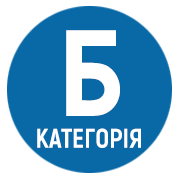THE COSSACK FACTOR IN THE STRUGGLE BETWEEN MOLDAVIA AND THE OTTOMAN EMPIRE IN 1574
DOI:
https://doi.org/10.33402/up.2022-15-35-45Keywords:
Moldavia, military-political relations, Poland, Ottoman Empire, John III the Terrible, Cossacks, I. Sverchevskyi, KhotynAbstract
The article analyzes the events that took place in Moldavia in 1574 during the reign of John III the Terrible, who, refusing to pay an increased tribute to Porte, angered the sultan and lost his post. At the same time, the successful military actions of the Ukrainian Cossacks gained considerable publicity in Central and Eastern Europe. They came to the aid of hospodar John III Voda in the struggle for liberation from the Ottoman Empire and often took a decisive role in the unequal confrontation with the Turkish-Tatar horde. That is how the events in Moldavia unfolded in 1574 when the hospodar John III the Terrible made an attempt to liberate Moldavia from the Turkish yoke and called on the Ukrainian Cossacks for help. He did not go to Constantinople as Selim II wanted but instead decided to take up arms against the troops sent to overthrow him. Although the chances of defeating the Turks were slim, the army of John III successfully defended itself for a long time. A detachment of Cossacks who arrived in Moldavia from the Polish border under the leadership of hetman I. Sverchevskyi played an essential role in the described events. The Cossacks became one of the most valuable combat units in the army of the Moldavian hospodar. But their fate and defeat were decided by the betrayal of the Moldavian boyars. However, John III the Terrible lost the war, demonstrating what became axiomatic: the international position of Moldavia could be altered only in a favorable international situation and only with the military support of the European powers.
References
Beczek, H. (2021). Moldavian Uprising of 1574 in Polish Sources. Codrul Cosminului, 27 (1), 91–104 [in English].
Bielski, M. (1856). Kronika Marcina Bielskiego (Vol. 3). Sanok [in Polish].
Bodnariuk, B., & Fedoruk, A. (2002). Uchast kozakiv u antyosmanskykh viinakh dunaiskykh kniazivstv (ostannia tretyna XVI – pochatok XVII st.). Proceedings of the International Scientific Conference to the 380 anniversary of the Khotyn war (pp. 82–83), Khotyn, 22 zhovtnia 2001. Chernivtsi [in Ukrainian].
Botushanskyi, V. (Еd.). (1998). Bukovyna: istorychnyi narys. Chernivtsi [in Ukrainian].
Dobrzhanskyi, O., Makar, Yu., & Masan, O. (2002). Khotynshchyna: istorychnyi narys. Chernivtsi [in Ukrainian].
Dragniev, D. (Ed.). (1987). Ocherki vneshnepoliticheskoi istorii Moldavskogo knyazhestva (poslednyaya chetvert XIV – nachalo XIX v.). Chișinău [in Russian].
Grekul, F. A. (Еd.). (1976). Slaviano-moldavskaia letopis Azariia 1551–1574 gg. In Slaviano-moldavskiie letopisi XV–XVII vv. (p. 137). Moscow [in Russian].
Hvanini, O. (2009). Khronika Yevropeiskoi Sarmatii (2nd ed.) (Yu. Mytsyk, Comp. & Trans.). Kyiv [in Ukrainian].
Holobutskyi, V. (1994). Zаporozke kozatstvo. Kyiv [in Ukrainian].
Horetskyi, L. (2005). Opys viiny Ivonii, hospodaria Voloskoho 1574 r. Memuary istorii Pivdennoi Rusi (V. Antonovych, Ed.). (Vol. 1). Dnipro [in Ukrainian].
Horokhivskyi, P. (2010). Hetman Ivan Svyrhovskyi u moldavsko-turetskii viini 1574 r. Uman [in Ukrainian].
Lepiavko, S. (1999). Ukrainske kozatstvo u mizhnarodnykh vidnosynakh (1561– 1591). Chernihiv [in Ukrainian].
Masan, O. (2005). Bukovyna yak obiekt mizhnarodnykh vidnosyn z davnikh chasiv do 1774 r. In V. Botushanskyi (Ed.), Bukovyna v konteksti yevropeiskykh mizhnarodnykh vidnosyn (z davnikh chasiv do seredyny ХХ st.) (pp. 9–168). Chernivtsi [in Ukrainian].
Milewski, D. (2020). From Świerczowski to Wallachian Expedition of Jan Zamoyski: Rise of the Cossack Factor in Polish-Ottoman Relations (1574–1600). From Pax Mongolica to Pax Ottomanica. War, Religion and Trade in the Northwestern Black Sea Region (14th–16th Centuries), 58, 215–227 [in English].
Movileanu, T. (2013). Efectivele militare din Ţara Moldovei în secolele XV-XVII. Revistă de știinţe socioumane, 1 (23), 122–123 [in Romanian].
Ohui, O. (2010). Istoriia obihu hroshovykh odynyts ta naimenuvan na Bukovyni. Moldavskyi period (Pt. 2). Chernivtsi [in Ukrainian].
Otryvki iz letopistsa ili khroniki ieromonakha Leontiia Bobolinskogo. (1853). In G. Grabianka, Letopis (p. 278). Kyiv [in Russian].
Paprocki, B. (2014). Gniazdo cnoty, Zkąd Herby Rycerstwa sławnego Królestwa Polskiego, Wielkiego Księstwa Litewskiego, Ruskiego, Pruskiego, Mazowieckiego, Żmudzkiego, y inszych Państw do tego Królestwa należących Książąt y Panów, początek swoy maią. Warsaw [in Polish].
Petriceicu-Hӑjdeu, B. (Еd.). (1865). Archiva istorică a României (Vol. IІ). Bucuresti [in Romanian].
Plewczynski, M. (2012). Wojny i wojskowość Polska XVI wieku (Vol. II). Zabrze- Tarnowskie Góry [in Polish].
Smolii, V. (Ed.). (2006). Istoriia ukrainskoho kozatstva: Narysy (Vol. 1.) Kyiv [in Ukrainian].
Stati, V. (2002). Istoriia Moldovy. Chișinău [in Russian].
Stryikovskyi, M. (2011). Litopys polskyi, lytovskyi, zhmudskyi i vsiiei Rusy (O. Kupchynskyi, Ed.). Lviv [in Ukrainian].
Ureche, G. (1990). The Chronicle of Moldavia (…) from Dragoş-voivode to Aron- voivode. In G. Ureche, M. Costin, I. Neculce, The Chronicle of the Land of Moldova: Chronicles (pp. 23–118.). Chișinău [in Romanian].
Vinogradov, V. (Ed). (1987). Kratkaia istoriia Rumynii: s drevneishykh vremen do nashykh dnei. Moscow [in Russian].
Zhukovskyi, A. (1991). Istoriia Bukovyny. Chernivtsi [in Ukrainian].






